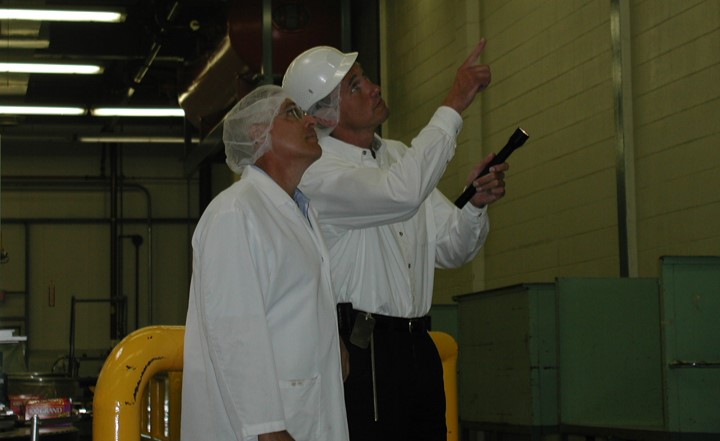By Madison Grimm
When a patient goes to a hospital with an allergic reaction, the doctor will likely attempt to look at all the factors around the reaction in order to determine the cause. By looking at the allergic reaction from a three-dimensional perspective, the doctor is able to consider all possible causes and provide the patient with a recommendation of what allergen(s) to avoid in the future. While simply treating the symptoms may relieve pain and discomfort, it does not addressing the root cause of the problem. This puts the patient at risk for another allergic reaction.
Unsurprisingly, this method also translates into the pest management field. Copesan service providers are trained to use three-dimensional inspection techniques when servicing clients. These techniques ensure they are not missing any underlying causes contributing to a potential pest infestation.
What are three-dimensional pest management inspection techniques?
Three-dimensional (3-D) techniques require the service provider to be aware of their surroundings – looking up, down and all around – during pest management service inspections, rather than simply looking at the floor as they walk to check each trap on their facility map. Utilizing this technique, pest control technicians are more likely to identify underlying issues, such as entry points or food sources, that could contribute to a pest problem. This technique is driven by the philosophy that anticipating and determining the source of the pest problem, instead of solely treating the existing issue, will help eliminate future pest pressures.
Three-dimensional inspection techniques are also applicable to client conversations. Copesan service providers are skilled in listening to what the client is not saying. Where in the conversation is the client hesitating? Are they alluding to another issue that may be contributing to pest issues? This could be anything from mentioning a leaking machine, to indicating a lack of employee cooperation with sanitation policies.
The goal is to help clients correct issues, and strategize on how to fix conditions that could lead to problems. In using these techniques, Copesan service providers take a proactive approach to pest management, as opposed to a reactive one. Utilizing this technique separates good pest management professionals (PMPs) from great PMPs.
Why is it crucial to have service providers who value techniques?
Service providers who understand the importance of 3-D inspection techniques provide exceptional service. The application of 3-D techniques enhances the quality of a pest management program.
For example, if a mouse is caught in a trap on a client’s property, the technician could just add more bait, and the trap would continue to lure and catch mice. This would provide a control method for the issue, but it doesn’t teach us anything about the overall problem. Your pest control provider should be asking additional questions. What makes mice attracted to the property? Are they in the entire facility or just one area? What can we do to prevent this issue?
This is where 3-D inspections become even more important. To both answer these questions and control the issue, the service provider should be looking for sanitation issues, potential pest entry points and food sources. Once conditions are determined, the next step is to develop a strategy with the client to reduce pest pressures and control any existing issues.
What is Copesan’s pest management program? How does it integrate 3-D inspection techniques into the program?
Three-dimensional inspection techniques are cohesive with the Integrated Pest Management (IPM) philosophy driving our pest management programs at Copesan. IPM is the industry best practice approach that exhausts all non-chemical methods of control prior to considering the use of pest management materials. Thorough inspection is the foundation of the IPM approach. Our goal is to provide long-term solutions by locating the source of the problem and not just implementing a temporary fix.
To ensure these techniques and the greater pest management program see success, service providers and clients must have open communication. At Copesan, we strive to develop partnerships with our clients, in which we work together to prevent pest issues. This partnership ensures the client addresses any concerns and additionally provides the client with control in their pest management situation. Clients who are involved in their pest management solutions tend to receive higher-quality service because they’re specifically catered to their needs. We encourage all clients to talk to their PMPs during each visit and voice any concerns, no matter how minor. Copesan service providers love talking all things pest and want to work with clients to develop a fitting plan.
Check out our YouTube channel to learn more about pest management techniques and pest prevention tips!

